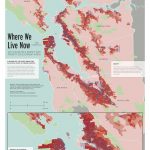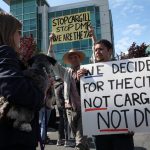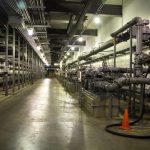The leaders of Bay Area planning agencies are struggling to persuade local governments and community groups that joint planning will make the region more socially, economically and environmentally healthy. Dealing with sprawl, the focus of the summer print edition of the Public Press, was front and center on Friday’s edition of “Forum,” the daily public-affairs talk show on KQED Radio.
Plan Bay Area, a regional blueprint to deal with anticipated population growth of as many as 2 million people, is controversial. Some local leaders are afraid of losing autonomy, and are threatening to rescind their support for the plan. Dave Iverson, the Friday host of “Forum,” focused on the future of transit, housing and land use.
Thursday’s building fire adjacent to the West Oakland BART station, which wrecked the morning commute, demonstrated the region’s dependence on public transit, said Steve Heminger, executive director of the Metropolitan Transportation Commission. He drew two conclusions: “First of all, the BART is pretty close to irreplaceable in our regional system of getting people from here to there. Secondly, our challenge is coping with 2 million more residents over the next 30 years — we simply cannot have them all driving cars or we’ll be in a world of hurt.”
Planners say the Bay Area needs to pivot from a geographically expanding growth pattern to one more centered in the core of the region, which has a high concentration of public transit and road networks. Plan Bay Area proposes to add affordable housing along transportation corridors and to existing areas of high density. Heminger said that when people live closer to public transit nodes, they are more likely to use them. He sees public transportation playing an increasingly larger role in people’s lives.
Ezra Rapport, executive director of the Association of Bay Area Governments, said the plan would boost economic growth through efficiently connecting people with their jobs.
“If we want our economy to be sustainable and to take advantage of our assets, we have to be sure the housing and jobs are located in places where people are not auto-dependent,” Rapport said. “We need to take advantage of our existing infrastructure, and our existing transit network and grow in a spread manner along that corridor.”
Critics of the plan say it is unrealistic to change the mindset of Bay Area resident who love their cars and are unwilling to switch to public transport. Laurel Prevetti, assistant director for planning for building and code enforcement of the City of San Jose, disagrees. The city has built or approved almost 46,000 housing units in and around transit stations since 1990.
“It was residents themselves that said it’s time to plan San Jose for people and not just cars,” Prevetti said. “They want to be able to bike, use transit, and walk to their destinations. We’re finding that the population itself is demanding more choice, even in a suburban setting.”
What is occurring in San Jose is illustrative of the regional plan, which allocates affordable housing responsibilities to cities across the Bay Area. the Metropolitan Transportation Commission holds the “big carrot,” Heminger said, and can rescind funding for transportation projects to cities that don’t comply. The Marin city of Corte Madera, whose leaders are worried that the plan will upset their community character, has voted to leave the association in protest.
Rapport called this dissention the “great political challenge” of the next 30 years: “What we try to do is demonstrate that if you plan a neighborhood as opposed to individual projects, and demonstrate the amenities and services and the issues related to schools, and solve those problems, then you can show the benefits of having these areas redeveloped.”
Listen to the full “Forum” show on KQED and read full coverage of Bay Area smart growth in the San Francisco Public Press Summer 2012 print edition, on sale at retail outlets around San Francisco and online.










